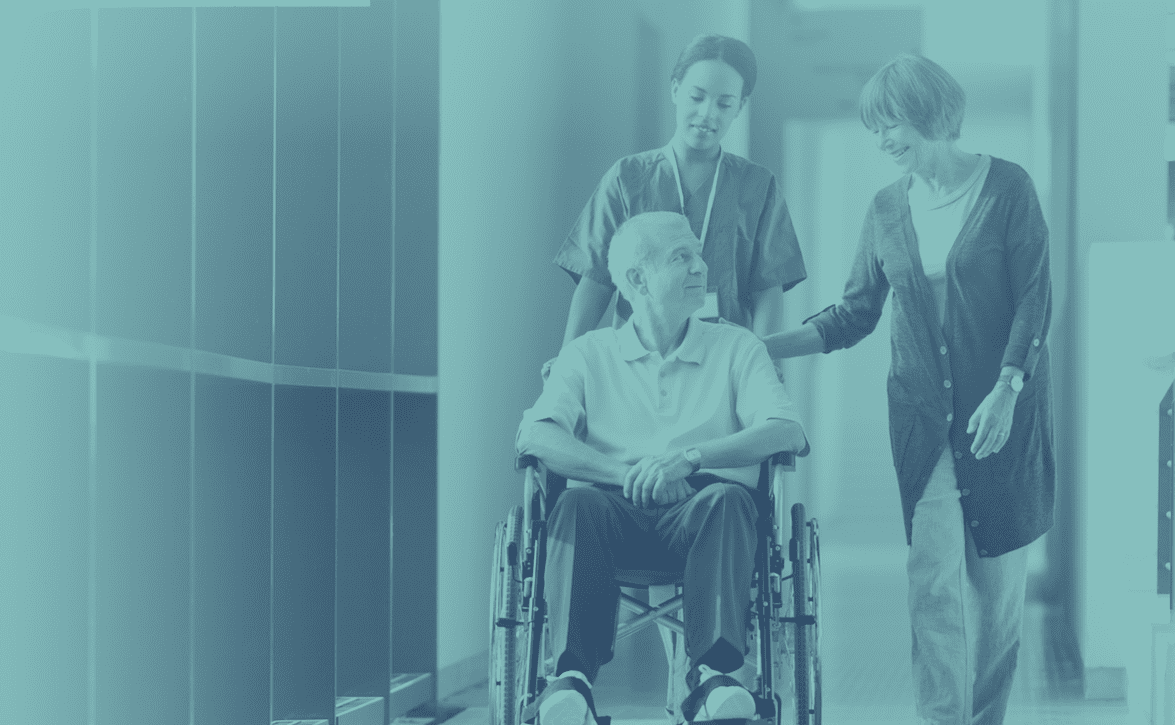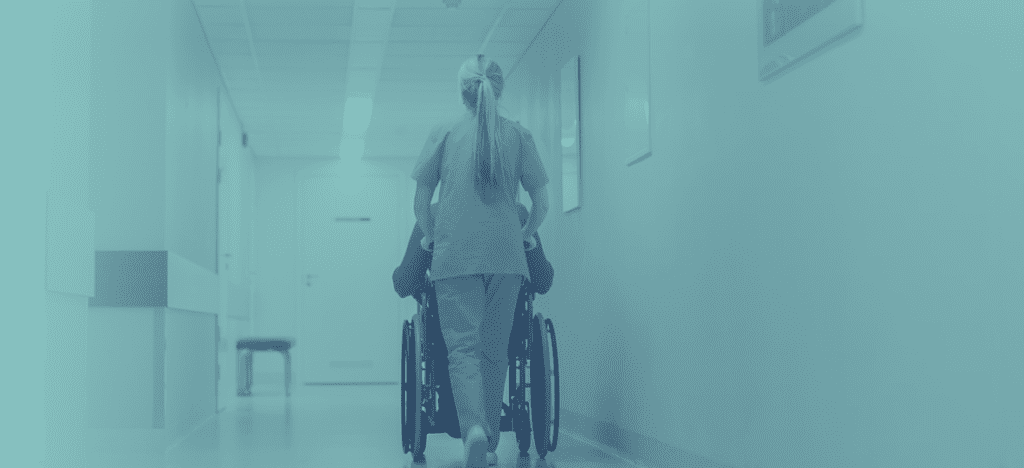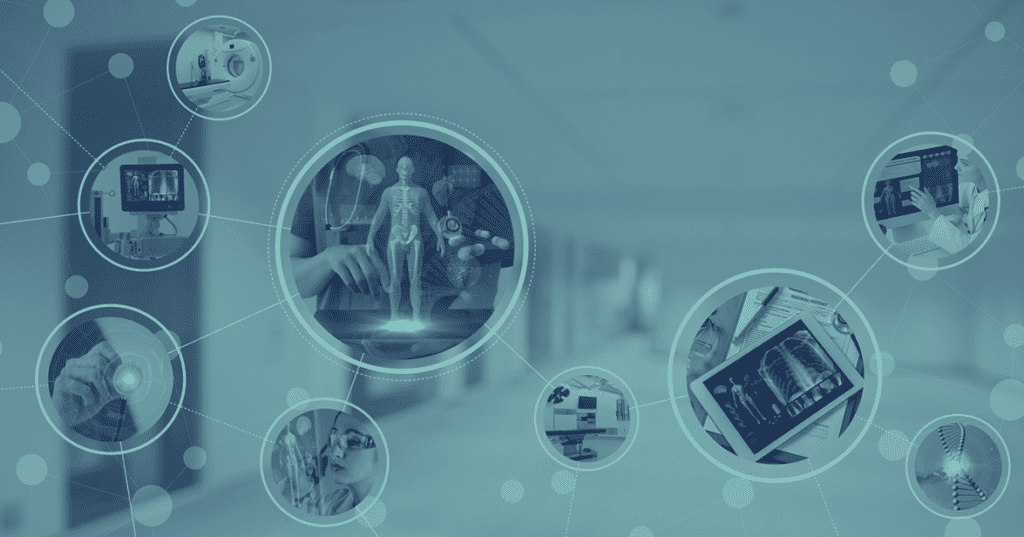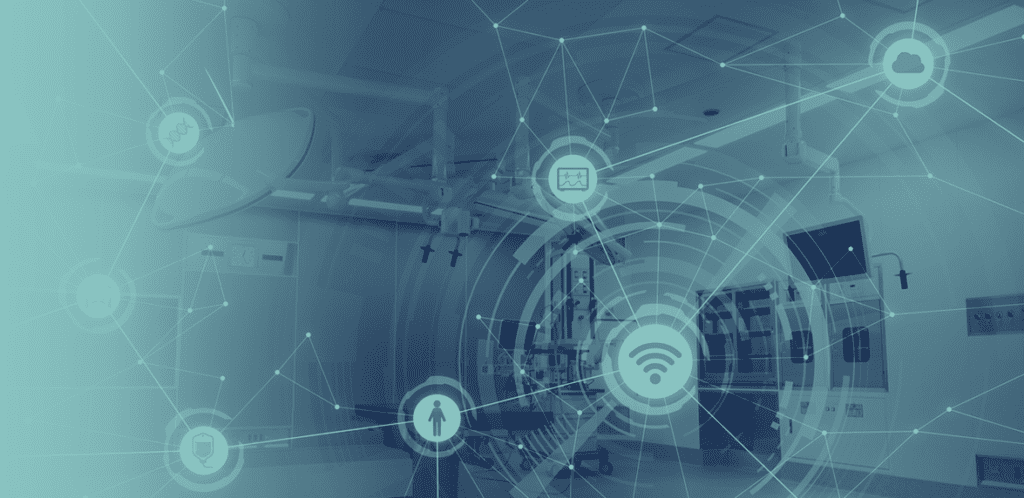Where’s the Wheelchair? IOT Allows Tracking Valuable Medical Equipment

Imagine a surgical team prepping the operating room only to find no oxygen masks, scalpels, nor intravenous pumps on hand. Or an emergency room with no available stretchers, clean linens, or exam gloves.
It may seem ludicrous, but these scenarios are playing out frequently in U.S. and foreign hospitals large and small. Medical equipment all too often winds up lost, stolen, in short supply, or simply classified as “whereabouts unknown.”
“According to some estimates, up to 25 percent of wheelchairs in U.S. hospitals are lost or stolen each year.
The above shortages may seem extreme, but disruptions in locating even the most mundane of medical object can have serious consequences. Case-in-point: the ubiquitous hospital wheelchair.
The Saga of a Wheelchair

Anyone involved with a hospital discharge knows the drill. It’s morning, and the patient is cleared to go, IV and monitors are removed, and release is imminent. The patient’s ride home arrives promptly, the discharge paperwork is drawn up, the sanitation crew stands by, the health care team moves on to other patients.
And then, inexplicably, everything grinds to a screeching halt.
As the hours tick by, the patient becomes anxious; potential ED admissions, post-surgical, and ICU-to-step-down transfers are delayed; the medical record cannot be closed; the authorized length-of-stay is exceeded; and the backlog of incoming and outgoing patients continues to rise exponentially as overcrowding ensues. Time, money, and resources are wasted. Everyone’s stress level rises as quality of care, inevitably, dips.
The culprit? It just might just be the wheelchair. According to some estimates, up to 25 percent of wheelchairs in U.S. hospitals are lost or stolen each year. So, a discharge delay might be blamed on a dearth of the devices in the facility; on the other hand, there might be an empty one five feet away in a hallway. Such discharge and other administrative delays have become the norm in both the U.S. and other countries. So, what’s the big deal?
Multiply that single delayed discharge by 10, 100, 1,000 or 10,000 for every lost/unaccounted wheelchair, every day, in every hospital worldwide. It’s impossible to calculate the lost revenue, increased patient and provider stress, time wasted, or chaos-induced cancellations.
And if that calculation seems impossible, just imagine tallying the myriad snafus caused by every single lost, missing, stolen, or simply under-stocked piece of medical equipment. Blood-pressure cuffs. Portable EKG and X-ray units. Portable computers harboring patient records.
According to a 2018 report, of provider respondents to a national survey, “nearly half … revealed that they’ve actually cancelled a case, and more than two-thirds (69 percent) have delayed a case because of missing supplies.” In addition, according to the survey results, “27 percent have seen or heard of an expired product being used on a patient, and 23 percent have seen or heard of a patient harmed due to a lack of supplies.”
In an article in the Harvard Business Review titled “An Obstacle to Patient-Centered Care: Poor Supply System,” the author, “after hundreds of hours of observations in hospitals throughout the U.S. and Canada,” concluded that health care professionals will face barriers to providing vital patient-centered care if the current supply situation is not remedied. According to the article, the problem will persist until adjustments are made to supply chains “… so that staff have the specific materials and equipment needed for patients’ individual care plans, when they are needed.”
That’s a lot of fallout from a wayward wheelchair. Is there any way to implement micro-tracking of such a common object in pursuit of macro-efficiency possible? Meet IoT, the Internet of Things.
To the Rescue: The Internet of Things & Real-Time Locating Systems
Health care providers have become accustomed to using cell phones and computers to, say, text instructions to nursing staff while attending a conference presentation, or to search for latest FDA clinical recommendations on their tablets.
Clinical-grade RTLS technology can deliver precise location data by segmenting spaces into clinically meaningful zones, such as patient rooms, beds, bays, nursing stations, and other relevant workflow areas.” The author adds, “In doing so, the technology delivers location and condition information at rapid speeds, so caretakers can take actions quickly — at the press of a button.
But there is another major type of connectivity that may be less obvious despite its ubiquity: the Internet of Things (IoT), defined as “the networking capability that allows information to be sent to and received from objects and devices using the Internet.” The word “medical” is added to describe this connectivity powerhouse in the field, coining the term MIoT.
Basically, any number of things with an on-off switch can be connected to the Internet – and to each other. Think of home security systems that, via the Internet, monitor a doorbell in real time. The doorbell is wired to identify the movement of a person at the door, captures an image of the visitor, and send that plus an alert to the homeowner’s cell phone: voilá; the owner knows who is at the door.
A person not in the system (the visitor) triggers a response from a network (wired into the doorbell) to another object (the video app in the system), and then transmits both to a user. The app used the Internet to communicate between things and humans. The Internet of Things.
Expand that capacity to include systems that connect humans to anything – complicated Internet interfaces, such as energy grids and the U.S. airspace – to the tiny interface between a specific blood-pressure cuff and a staff member in a hospital. Yes, that is possible; read on.
According to a recent article in Forbes, by 2020, there could be as many as 100 billions devices connected via IoT. Those connections will be people-to-people, people-to-things, and things-to-things. Millions of those devices (and people) are, and will continue to be, in hospitals — in the form of equipment that is being tracked 24/7, in real time.
As Tom Dennis, co-founder and director at HITactics, commented, “Any hospital will have thousands of items moving throughout it at any given time. Take, for example, IV pumps. Where is each unit at any given time? Which ones are sanitized? And how many are out for repair?” Dennis added that having such information can reduce the number of each type of equipment needed if items could be precisely tracked.
IoT and Hospital Medical Equipment Tracking Systems

The use of the IoT to precisely track equipment in a hospital setting is achieved via “real-time locating (or location) systems” (RTLS). A typical RTLS setup comprises readers, tags, and a sophisticated network, all of which use the IoT in the following manner:
- Several receivers (or readers) distributed throughout the facility (and outside of it) that receive wireless signals from radio-frequency ID (RFID) tags attached to each piece of equipment.
- Each RFID tag has its own unique ID that is logged as part of the system’s inventory.
- The tags periodically transmit their own unique ID information.
- An interfacing system network that picks up and locates the transmission from the RFID tag (and by proxy, the piece of equipment’s location).
- The system then transmits the location (down to the exact floor, room location, etc.) to staff members’ computers and/or cell phones, which are programmed to receive the data, allowing easy and immediate retrieval of the smallest (think thermometer) to the largest (think MRI machine) piece of medical equipment.
The RFID tags also have connectors, which are programmed to communicate specific information about the equipment, such as whether it is powered on, has been sanitized, or is out for repair. The tags are outfitted with writeable memory to log and store data about its human users, and if the item it identifies is due for maintenance, needs to be sanitized, and other vital information.
IoT: Real-Time Equipment Tracking, Real-World Benefits
According to a recent article in Becker’s Hospital Review, “Clinical-grade RTLS technology can deliver precise location data by segmenting spaces into clinically meaningful zones, such as patient rooms, beds, bays, nursing stations, and other relevant workflow areas.” The author adds, “In doing so, the technology delivers location and condition information at rapid speeds, so caretakers can take actions quickly — at the press of a button.”
RTLS systems can be integrated into multiple extant hospital administrative and security systems. (Even hospital staff members can be provided with ID tags containing embedded chips that link to the tracking network.) Such systems create a more seamless, efficient, and cost-effective equipment management network.
According to a 2018 report, of provider respondents to a national survey, “nearly half … revealed that they’ve actually cancelled a case, and more than two-thirds (69 percent) have delayed a case because of missing supplies.” In addition, according to the survey results, “27 percent have seen or heard of an expired product being used on a patient, and 23 percent have seen or heard of a patient harmed due to a lack of supplies.”
HITactic chief Dennis agrees. In a recent interview, the CEO commented that using the IoT to power RTLS technologies and precisely track assets ensures that equipment is in the right place at the right time, reduces costs by reducing the number of lost or stolen items, and helps to increase efficiencies and profits by automating equipment needed at each phase of hospital operations.
RTLS technologies have already launched in multiple hospitals nationwide, and the results have been impressive.
Wake Forest Baptist Health
The Winston-Salem based hospital network implemented a comprehensive RTLS system that tracks 17,000 pieces of medical equipment in real time, according to a recent article in health care IT News. Eliminating onerous searches for assets in supply closets, rooms, and hallways is a boon for Wake Forest.
“RTLS helps us understand the true asset utilization of our medical equipment and make sound business decisions, such as reallocating equipment if the asset type is not being utilized at the desired level, or approving/denying the new equipment purchase order,” commented senior vice president of business services at Wake Forest in the report. So far, the RTLS has saved the network $3.5 million.
Piedmont Hospital
One of the biggest systems in Georgia comprises 11 hospitals and 600 facilities. Piedmont first tested using RTLS in 2011. The system saved $2 million overall and increased productivity by 90 percent, plus garnered a prestigious tech award for their efforts. In 2016, the network announced expansion of the technology to six more hospitals in its system.
Stamford Health
The Connecticut-based facility saved $627,000 in just the first seven months of deploying their MIoT-powered RTLS, health care Facilities Management reports. A large chunk of that change was gained in using the technology to streamline the discharge process.
Saving Big in Texas
According to a recent report in Becker’s Hospital Review, after Texoma Medical Center installed its own RTLS, one of the biggest returns on investment (ROI) was a savings of $88,000 no longer needed for new PCA pumps alone. According to supply-chain director Gregg Stepp, “We started analyzing how many PCA pumps we had, and we found we had 75 percent of the pumps available when staff members thought 99 percent percent of the pumps were unavailable.” He added, “So instead of spending $88,000 to buy new pumps, we saved that money because we are able to track our equipment’s location and availability much better.”
Another article details how the RTLS at Texas Health Presbyterian Dallas Hospital saved the facility $412,000 in the first year – after accounting for the cost of the system and staff training for it. And during that first year of operation, according to the report, the facility did not need to purchase or rent a single piece of equipment. The hospital uses now uses 4,000 tags and plans to continue expanding.
Texas Health Alliance
health care Management reported in 2014 that RFID systems save the alliance $65,000 a month in rental fees alone. The same report asserted that even the small, 58-bed Texas Health Harris Methodist Hospital Alliance — a facility whose name seems larger than its equipment inventory — tags “anything that moves,” from high-value to low-value assets.
Parkland Health & Hospital System
The sprawling system implemented their first MIoT RTLS asset-tracking system in 2018, tagging 60,000 assets throughout their system, realizing an initial savings of $390,000 in the first several months alone.
The Cleveland Clinic
The massive national and international network started using RTLS as far back as 2008 and adopted a comprehensive system in 2011. RFID Respiratory-equipment tracking significantly shortened the time needed to locate ventilators, according to a 2013 study.
The above is just a smattering of the hundreds of hospitals that are using RFID and RTLS to track millions of pieces of medical equipment daily, and streamlining processes such as transfers, admissions, and discharges. The use of MIoT to track equipment frees hospital staff members, allowing them to concentrate on providing the best patient-centered care possible instead of chasing down equipment. Asset tracking also increases patient satisfaction and decreases organizational liability for distressing and potentially harmful delays.
Asset Tracking Using MIoT Is an Exploding Industry

A 2019 report offers a glimpse into just how important MIoT equipment-tracking is, not just for hospitals and their staff members, but for the global economy. The article states that the global market for hospital asset management in both developing and developed countries “is rising rapidly primarily due to the installation rate of asset tags in all the applications.” That market is projected to reach a potential $15 billion by 2026.
MIoT is shaping processes in hospitals worldwide in ways that could have been only a pipe dream a decade or two ago. There will undoubtedly be snafus, false-starts, and important ethical questions about privacy and network security, among others. But the next time you leave the house to pick up a loved one from the hospital, don’t pack a lunch. The nurse will summon a wheelchair from her smart phone in a heartbeat.
LEARN MORE
Contact us today to learn how Lucidworks can help your team create powerful search and discovery applications for your customers and employees.